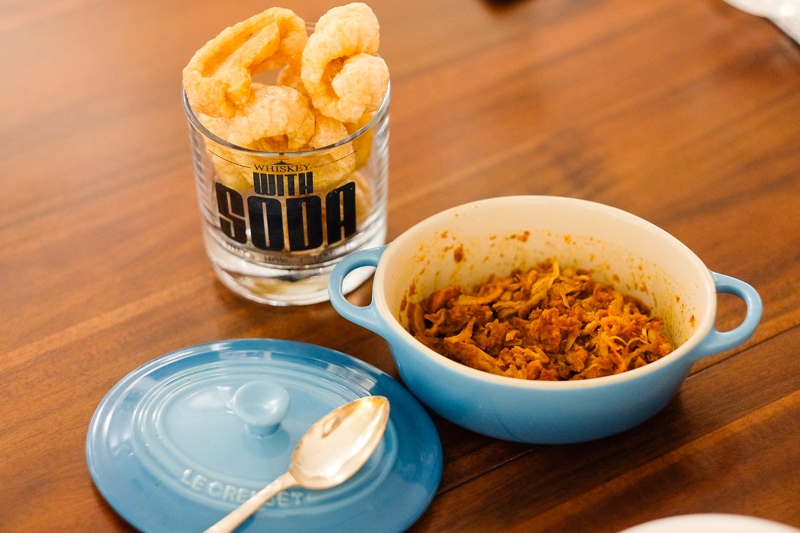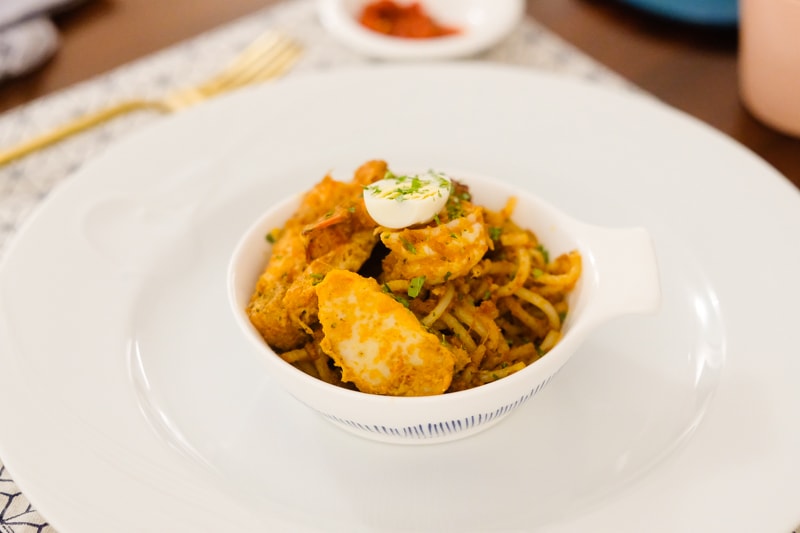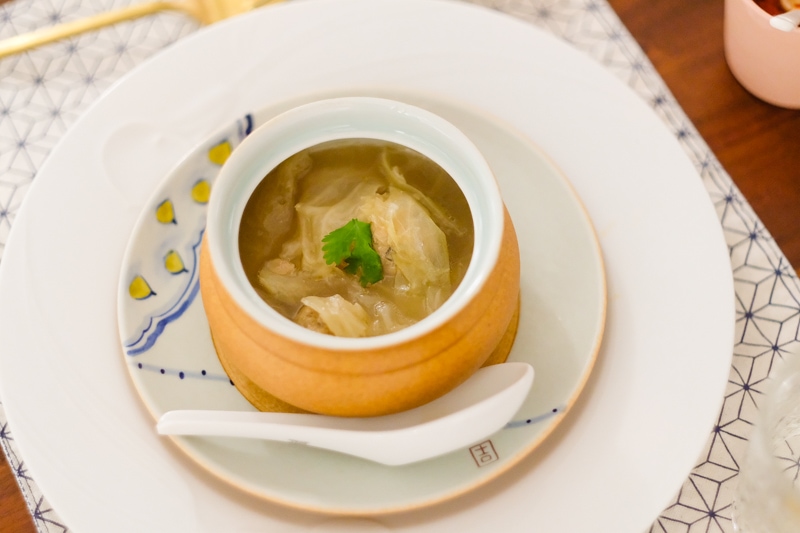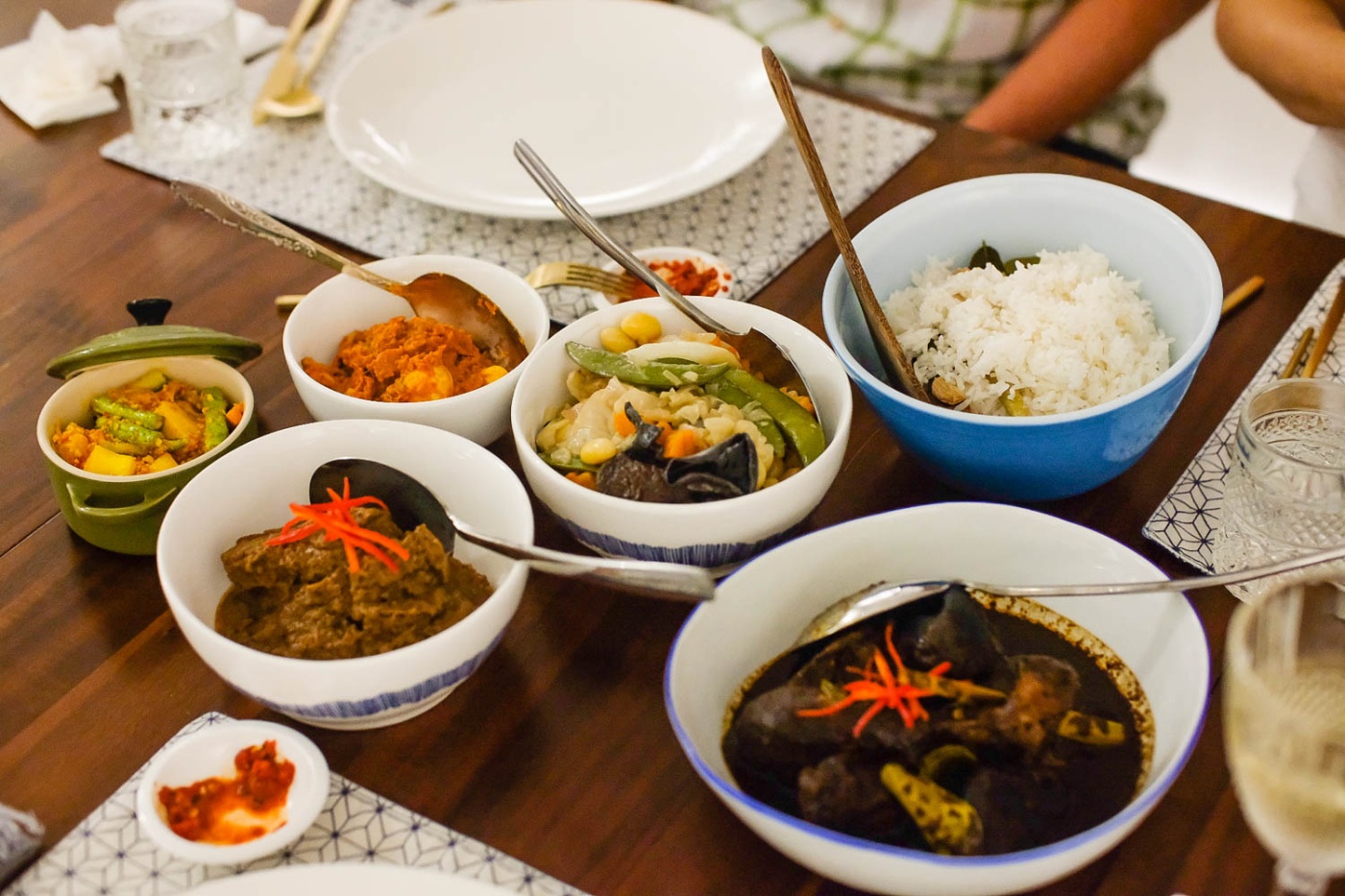Good Graces Doesn’t Need Much to Get in Your Good Books
After two years of embracing the bucolic French countryside, I finally made my maiden voyage back to Singapore. Upon arrival, I headed straight to a fashionable pied-à-terre tucked away in the heart of Balestier. Scoring a seat at Good Graces—a highly coveted private dining experience—was too good to pass up despite the jetlagged-induced headache. During my absence, the F&B scene has not lost its groove and private home dining is no exception.
Grace Kee, the brainchild behind Good Graces, serves Peranakan-inspired food influenced by her grandmother’s recipes. Before that, the 47-year-old had an illustrious career working in the zoo, MTV Asia and Resorts World Sentosa up until the pandemic hit. She now runs her own event management company and commits two to three nights of her week to hosting dinners. “It’s my passion project, which I started about a year ago,” she chirps. “I remember the times when I would sneak into my grandma’s kitchen and be put to work—from peeling ginger to tediously fanning the charcoal flames till they burned a bright white.”
She regrets not harbouring an interest in picking up cooking techniques from her grandmother earlier. “I only started learning from my grandma in my 20s and she passed away in my early 30s, so I didn’t get a lot of her recipes,” Grace says. It was only after a 5-year restaurant partnership with chef Damien d’Silva did she manage to decode her grandma’s slapdash structure of ingredients used. While other private dining chefs are adding more dining slots, Grace prefers to tweak and fine-tune her dinners. To her, it is more important to be consistently good instead of occasionally great.
Once you enter Good Graces, a narrow stairwell gives way to a lavishly decorated open space, and upon closer inspection, a kaleidoscope of old and new. Shelves and overhanging glass cabinets hold a mishmash of collectibles and memorabilia stemming from an era where slow food was treasured. An era where matriarchal Peranakan women were well-known for their extravagant feasts served on the exquisite hand-painted porcelain plates. It has been implied that these vivid Nyonya ware were a form of self-expression, of how Peranakans perceived life—colourful. And Grace has adopted this outlook in spades starting with her food.

I am greeted with cones of anchovies and peanuts and belinjo crackers with a generous serving of homemade sambal belachan for sapidity. A trio of starters includes the quintessential kueh pie tee, an updated version of Eurasian devil’s curry (instead of chicken think pulled pork served with chicharron) and sambal buah keluak spread on brioche toast with pan-fried foie gras. “I have a slight obsession with buah kelauk,” Grace admits. She has even experimented with integrating the carefully cured fruit into her ngoh hiang, and blending it into pork and chive dumplings for added richness.

A neat serving of dry laksa replete with prawns, tofu puff, fish cake and beansprouts elicits ‘revenge dining’ in me, while a mini clay pot of hee peow soup chock-full of slow-braised cabbage and fried meatballs recharges the spirit instantly.

A splash of alcohol, specifically Martell Cordon Bleu, adds depth to the broth while accentuating its inherent unctuousness.
As a one-woman show, Grace tells me the most comfortable group size is eight, though she has had numerous requests for larger canapé style parties. “That’s nothing,” she says. “I used to host 200 guests at my home during Chinese New Year back in the day.” There is no telling what this woman cannot do.
The mains that follow are an assembly line of my favourite Peranakan dishes: beef rendang, ayam buah keluak, sambal belimbing and chap chye. I am given a large bowl of rice perfumed with lemongrass, galangal and kaffir lime leaf that quickly becomes a vehicle for all the ‘black gold’ retrieved from the cured buah keluak. After a gentle assessment, one would notice that Grace’s adaptations are a bit more tart as compared to the usual Indonesian or Malaysian versions. Coconut milk devotees might find these representations lacklustre since Nyonya food is flavoured by Thai influences due to Malacca’s proximity to Thailand.
The marigold-coloured sambal belimbing (freshly picked from her auntie’s garden) with prawns and quail egg walks the tightrope between heat and piquant. But it is the chap chye, littered generously with black fungus that captures your taste buds. Its gravy is thick enough to coat the back of a spoon with the judicious use of fermented beancurd.

Dessert gets a bit fun. The DIY cendol station allows you to choose various toppings to go with her homemade rum-infused coconut ice cream—and it is a home run.
At Good Graces, one can escape the stimulating trappings of a restaurant and focus on each other and the food. No blasting music, overly demanding guests or chair-kicking waiters. And that, perhaps, is the biggest draw factor for me. I went in with no expectations and had my socks knocked off.
Good Graces is fully booked till November and Grace charges $125 per person.


